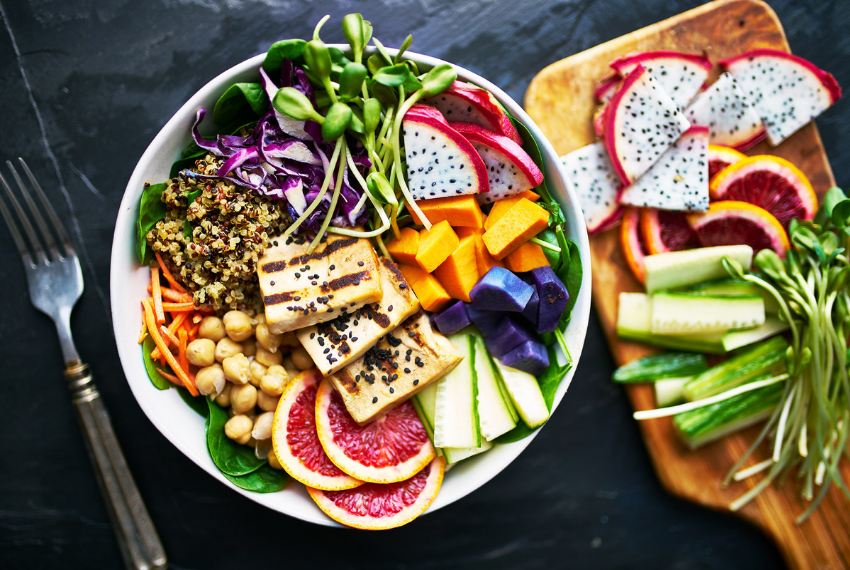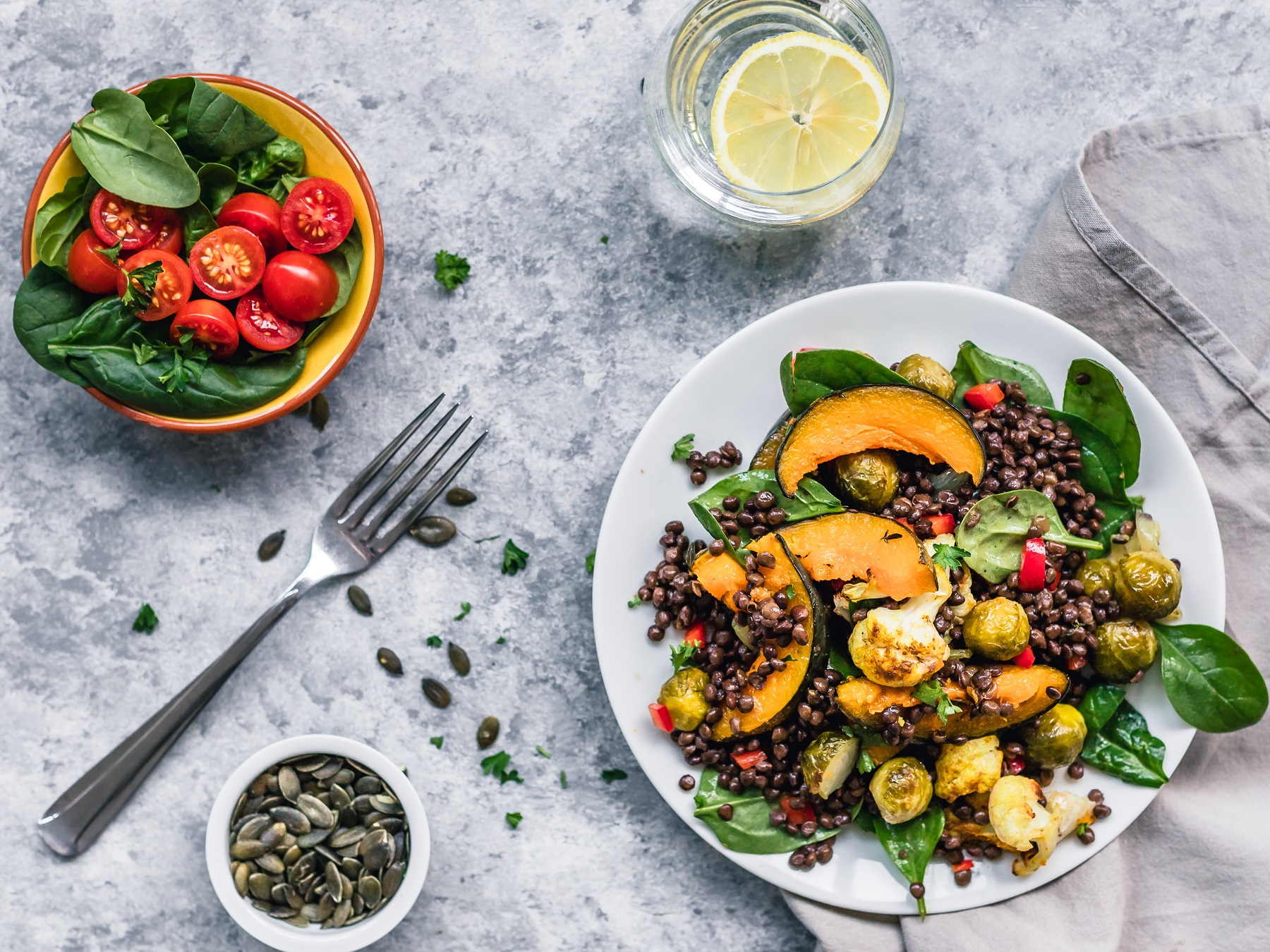
Looking for that something special for your gut microbiome? How about a bunch of flours rich with prebiotics? A diverse range of prebiotics helps your gut microbiome flourish to keep you happy and healthy.
Having a healthy gut microbiome is increasingly being identified as an important factor for maintaining overall health. So to show our gut bugs some love, we need to nourish it with the right types of food to help our beneficial gut bacteria flourish. And what do these gut bacteria love most? Prebiotics!
What are prebiotics?
Prebiotics are nondigestible compounds from plant-based foods that have been identified as promoting the growth of beneficial microorganisms in the gut to produce a health benefit1. Together with dietary fibre, prebiotics are an important component of a healthy, balanced diet to promote gut health, as the main fuel source for our gut microbes. These food components cannot be broken down by the enzymes available in the small intestine, so they reach the large intestine relatively untouched to be broken down by gut bacteria2.
Examples of prebiotics include plant polyphenols and plant fibres such as fructooligosaccharides, galactooligosaccharides, xylooligosaccharides, resistant starch, inulin, arabinoxylan, beta-glucans and pectin.
Why are prebiotics and dietary fibre important for gut bacteria?
While the research into what makes a healthy gut microbiome is still ongoing, we are finding that a diverse microbiome3,4 that has lots of bacteria that can breakdown fibre5–8 is commonly linked with good health outcomes.
An important function in a healthy gut microbiome is the ability to break down fibre. When gut bacteria break down fibre, they primarily produce beneficial substances, such as acetate, propionate and butyrate9, which are important for good gut health.

See your microbiome’s potential to produce beneficial substances with Microba Insight™.
Butyrate is especially important because it is the primary fuel source for your intestinal cells, helps maintain an intact gut barrier9, reduces inflammation10, and promotes feelings of satiety, or fullness. Having many bacterial species that can use fibre as a fuel source and produce butyrate as a metabolite is key for maintaining good gut health. Studies have shown that increasing your intake of prebiotic fibres, especially resistant starch11, can increase butyrate production by the gut microbiome.
Another important factor for a healthy gut microbiome is diversity. Diversity is a measure of how many different microorganisms are present in the microbiome and how evenly distributed those microorganisms are. Numerous studies have indicated that healthy individuals have a more diverse gut microbiome than unhealthy individuals12. An easy way to promote greater microbial diversity is to consume a wide variety of prebiotics to encourage the growth of different bacteria that specialise in breaking down the different types of fibres and plant polyphenols. This will also improve the ability of your gut microbiome to produce short-chain fatty acids like butyrate.
What flours include prebiotics and fibre for gut health?
Foods with high levels of prebiotics and dietary fibre include fruits, vegetables, nuts, seeds, wholegrain cereals, legumes and pulses. Baking or consuming foods with a variety of plant-based flours is one way to introduce new sources of prebiotics to your diet. While wheat flour is a staple of the Australian diet, there are many other flour and grain options available that can help ensure you get a wide range of prebiotic fibres needed to feed a healthy microbiome. Other flour and grain options you might consider include:
- Buckwheat – a source of resistant starch and polyphenols
- Rye – a source of arabinoxylan, beta-glucan, galactooligosaccharides, fructooligosaccharides, resistant starch and polyphenols
- Sorghum – a source of arabinoxylan, resistant starch and polyphenols
- Spelt – a source of galactooligosaccharides
- Barley – a source of arabinoxylan, beta-glucan, inulin, resistant starch, and polyphenols
- Polenta – a source of arabinoxylan, inulin, pectin and resistant starch
- Oats – a source of arabinoxylan, beta-glucan, resistant starch and polyphenols
- Quinoa – a source of resistant starch and polyphenols
- Chickpea flour – a source of galactooligosaccharides, resistant starch and polyphenols.
- Green banana flour – a source of resistant starch and pectin
Not a confident baker? Try a fruit platter with a range of seasonal fruits, and if you must indulge in a little chocolate, make sure at least 80% cocoa so it’s high in proanthocyanidins – another prebiotic known to promote the growth of beneficial bacteria.

To include more prebiotics in your diet, get personalised dietary suggestions with Microba Insight™.
This microbiome test is not intended to be used to diagnose or treat medical conditions. A full disclaimer is available here.
References
1). Slavin, J.
Fiber and prebiotics: mechanisms and health benefits.
Nutrients, 5(4), 1417-1435 (2013). Doi: 10.3390/nu5041417
2). DeVries, J. W.
On defining dietary fibre.
Proceedings of the Nutrition Society, 62(1), 37-43 (2003). Doi: 10.1079/PNS2002234
3). Valdes, A. M., Walter, J., Segal, E., & Spector, T. D.
Role of the gut microbiota in nutrition and health.
BMJ, 361, k2179 (2018). Doi: 10.1136/bmj.k2179
4). Sommer, F., Anderson, J. M., Bharti, R., Raes, J., & Rosenstiel, P.
The resilience of the intestinal microbiota influences health and disease.
Nature Reviews Microbiology, 15(10), 630 (2017). Doi: 10.1038/nrmicro.2017.58
5). Jie, Z., Xia, H., Zhong, S. L., Feng, Q., Li, S., Liang, S., ... & Zhang, D.
The gut microbiome in atherosclerotic cardiovascular disease.
Nature communications, 8(1), 845 (2017). Doi: 10.1038/s41467-017-00900-1
6). Koh, A., De Vadder, F., Kovatcheva-Datchary, P., & Bäckhed, F.
From dietary fiber to host physiology: short-chain fatty acids as key bacterial metabolites.
Cell, 165(6), 1332-1345 (2016). Doi: 10.1016/j.cell.2016.05.041
7). Lin, H. V., Frassetto, A., Kowalik Jr, E. J., Nawrocki, A. R., Lu, M. M., Kosinski, J. R., ... & Marsh, D. J.
Butyrate and propionate protect against diet-induced obesity and regulate gut hormones via free fatty acid receptor 3-independent mechanisms.
PloS one, 7(4), e35240 (2012). Doi: 10.1371/journal.pone.0035240
8). Bourassa, M. W., Alim, I., Bultman, S. J., & Ratan, R. R.
Butyrate, neuroepigenetics and the gut microbiome: can a high fiber diet improve brain health?.
Neuroscience letters, 625, 56-63 (2016). Doi: 10.1016/j.neulet.2016.02.009
9). den Besten, G., van Eunen, K., Groen, A. K., Venema, K., Reijngoud, D. J., & Bakker, B. M.
The role of short-chain fatty acids in the interplay between diet, gut microbiota, and host energy metabolism.
Journal of lipid research, 54(9), 2325-2340 (2013). Doi: 10.1194/jlr.R036012
10). Cushing, K., Alvarado, D. M., & Ciorba, M. A.
Butyrate and mucosal inflammation: new scientific evidence supports clinical observation.
Clinical and translational gastroenterology 6(8), e108 (2015). Doi: 10.1038/ctg.2015.34
11). McOrist, A. L., Miller, R. B., Bird, A. R., Keogh, J. B., Noakes, M., Topping, D. L., & Conlon, M. A.
Fecal Butyrate Levels Vary Widely among Individuals but Are Usually Increased by a Diet High in Resistant Starch.
The Journal of nutrition, 141(5), 883-889 (2011). Doi: 10.3945/jn.110.128504
12). Lloyd-Price, J., Abu-Ali, G., & Huttenhower, C.
The healthy human microbiome.
Genome medicine 8(1), 51 (2016). Doi: 10.1186/s13073-016-0307-y


